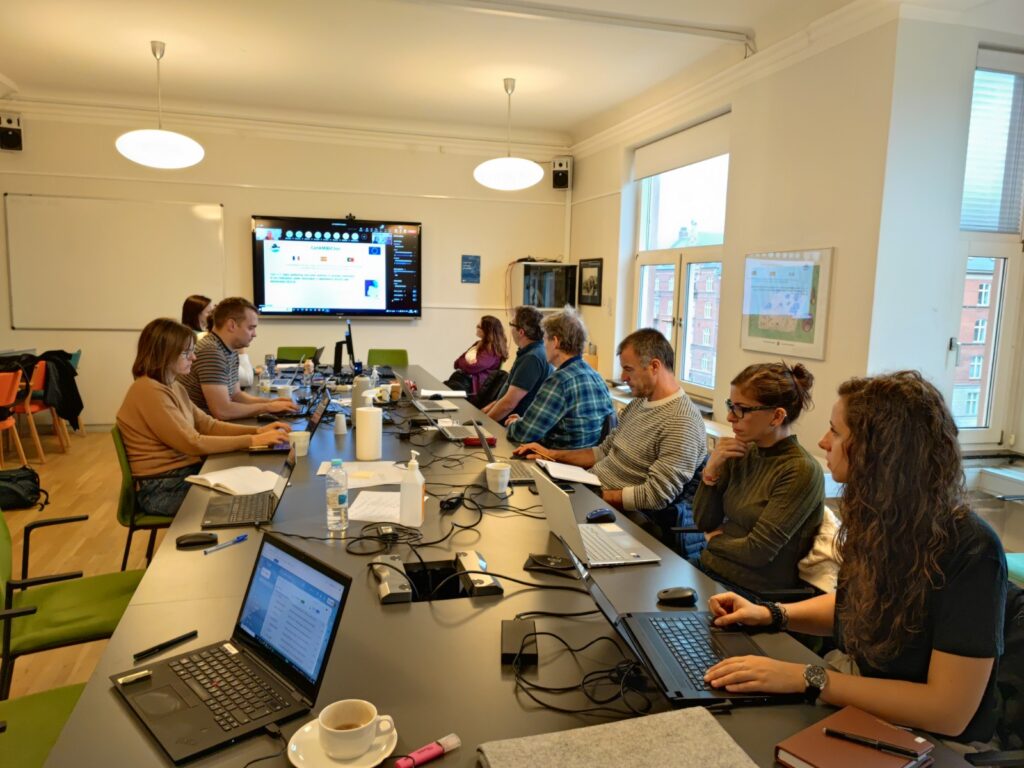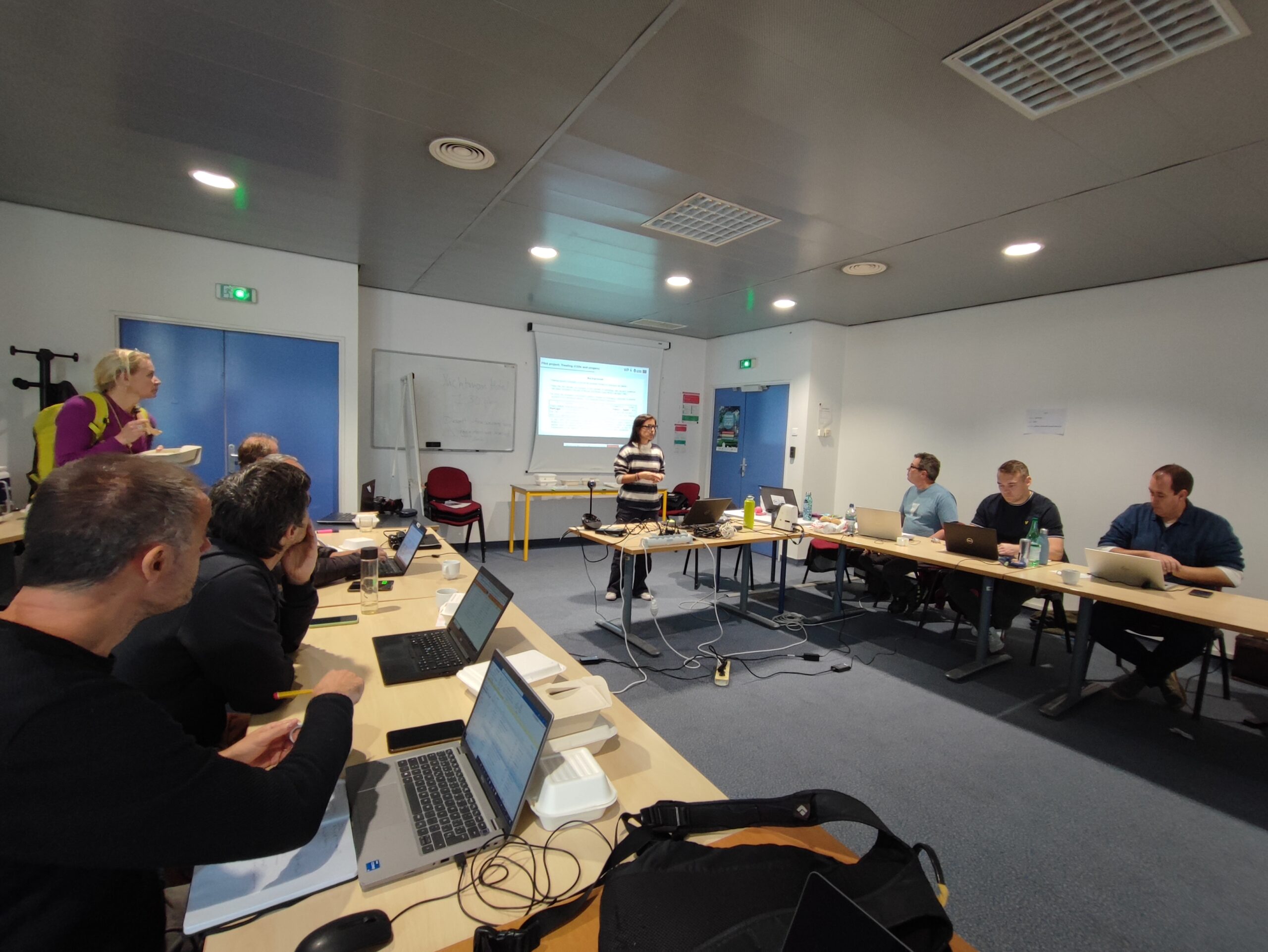The project “Coordinated strategy for the assessment, monitoring and management of cetaceans in the sub-region of the Bay of Biscay and Iberian coast” (CetAMBICion) is carrying out different scientific actions with the aim of contributing to increase the knowledge on possible measures to mitigate cetacean bycatch. These teams of scientists have participated during the last... Read more »
The project “Coordinated strategy for the assessment, monitoring and management of cetaceans in the sub-region of the Bay of Biscay and Iberian coast” (CetAMBICion) is carrying out different scientific actions with the aim of contributing to increase the knowledge on possible measures to mitigate cetacean bycatch. These teams of scientists have participated during the last two months disseminating the actions of the project and the results obtained thanks to its implementation in four international discussion events on cetacean bycatch.
One of these participations was in the meeting of the Working Group on Bycatch of Protected Species (WGBYC) held in late September at the University of La Rochelle (France) and whose objectives are aligned with the objectives of the project. This meeting of specialists aims to collect and evaluate information on bycatch monitoring of protected and endangered species, including cetaceans, birds and sea turtles.
The working group addressed different issues related to the proposed monitoring of cetaceans and the evaluation of the effectiveness of bycatch reduction strategies and measures, and the project contributed with the presentation of the first results of the mitigation devices being tested, including cetacean excluders (CEDs), which allow marine mammals that accidentally enter fishing nets to exit safely; and pingers, acoustic devices attached to fishing nets, which scare cetaceans away and thus prevent their incidental capture.
This event was attended by several project partners, including the Spanish Institute of Oceanography (IEO-CSIC) and AZTI, the University of the Algarve and the University of La Rochelle.
On the other hand, on 5 and 6 October, the IUCN held an international meeting on by-catches in Malaga, where the IEO-CSIC presented the mitigation and catch reduction devices designed within the framework of the project.
This conference, which was attended by experts and researchers from all over the world working in this field, served to share experiences and analyse data on the subject, with the aim of debating and identifying effective solutions to reduce the volume of catches, a threat to the survival of these species.
In addition, the International Council for the Exploration of the Sea (ICES) organised the Workshop on Technical Development to Support Fisheries Data Collection (WKEMBYC2) at its headquarters in Copenhagen (Denmark) from 24 to 28 October, where different emergency fishing measures to minimise bycatches of short-beaked common dolphins (Delphinus delphis) in the Bay of Biscay were discussed.
At this meeting, the IEO-CSIC analysed the results of the observer programmes and mitigation measures in the fishing fleet operating in the Bay of Biscay, highlighting different technical measures used in the CetAMBICion project to reduce by-catches of small cetaceans. The abundance estimates of these species, carried out within the framework of the project, were also presented.

Finally, we participated in the Congress of the Spanish Cetacean Society (SEC), held in Ibiza between 28 and 30 October, where a video presentation of the SCANS-IV campaign was given. The research, which is being repeated for the fourth time after those carried out in 1994, 2005-2007 and 2016, has studied the distribution and abundance of cetaceans in Atlantic waters throughout Europe, as part of an international initiative supported by CetAMBICion and involving more than 80 scientists from Spain, France, Portugal, the United Kingdom, Germany, Denmark, the Netherlands, Norway and Sweden.
The conference also included a presentation on the use of cetacean excluder devices (CEDs) to mitigate dolphin bycatch. The preliminary results of the by-catch risk assessment within the Spanish Continental Shelf, which is being carried out within the framework of the project, were also presented.
THE PROJECT
The CetAMBICion project, coordinated by the Institute of Marine Research (IIM-CSIC) and involving 15 partners from Spain, France and Portugal, aims to strengthen collaboration and scientific work between the three countries to estimate and reduce cetacean bycatch in the Bay of Biscay and Iberian Coast sub-region, in close collaboration with the fishing sector.
The initiative is part of the European Commission’s DG ENV/MSFD 2020 (Marine Strategy Framework Directive) call and the objectives are also aligned with the Habitats Directive and the Common Fisheries Policy.


